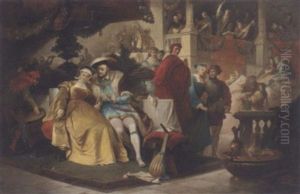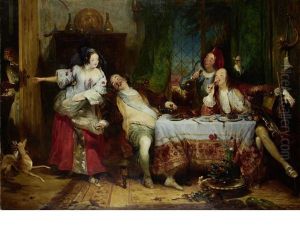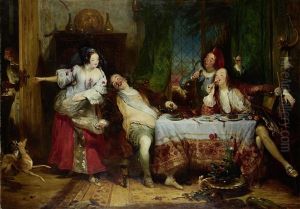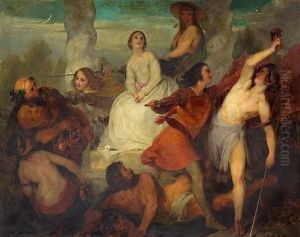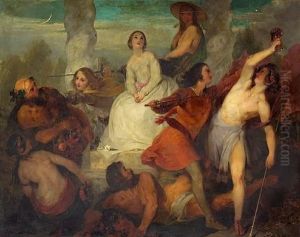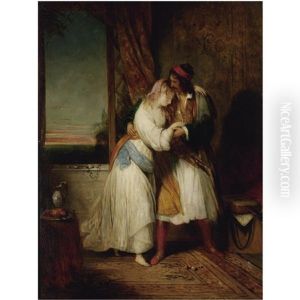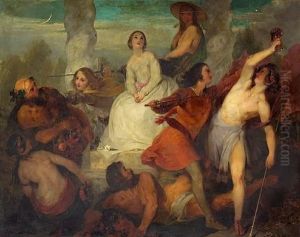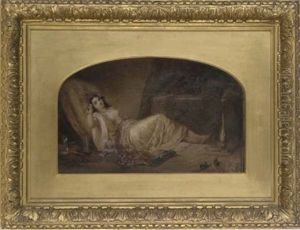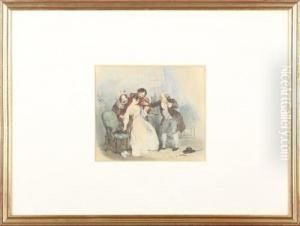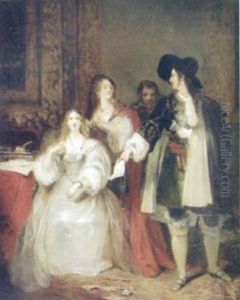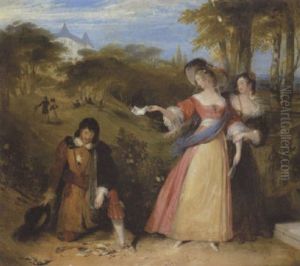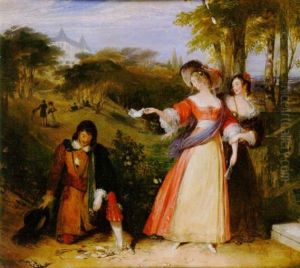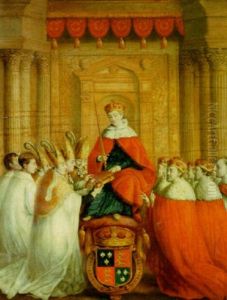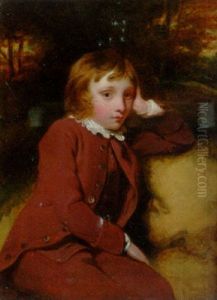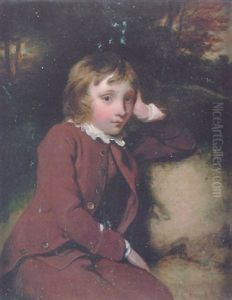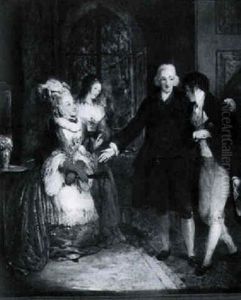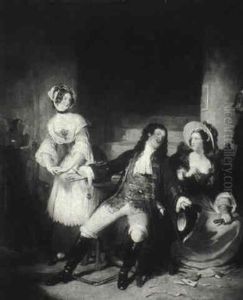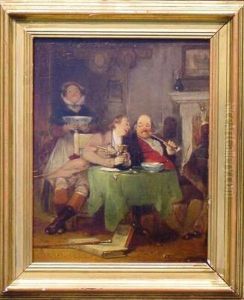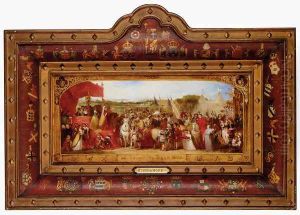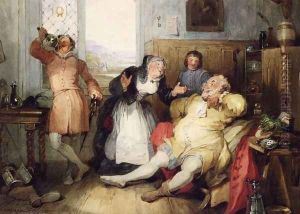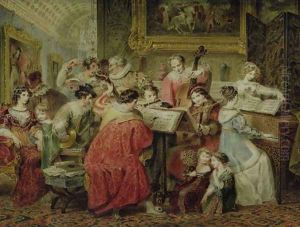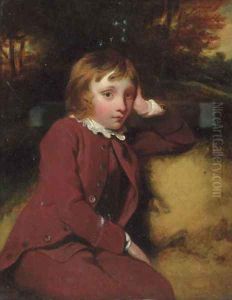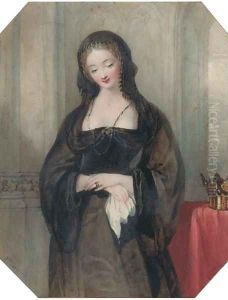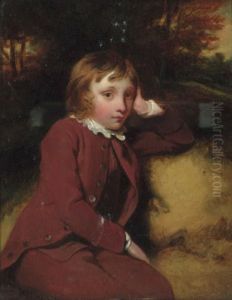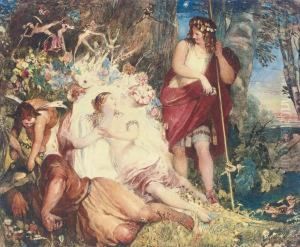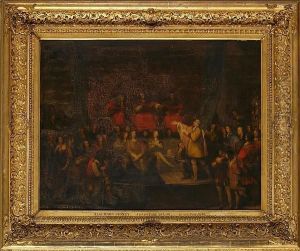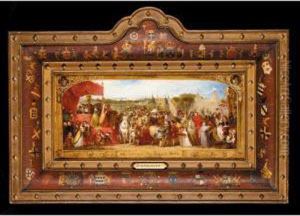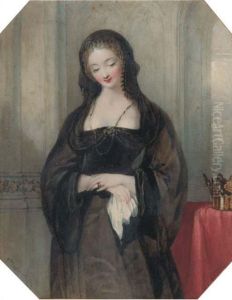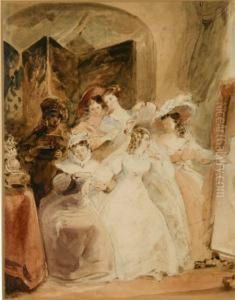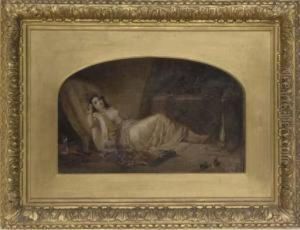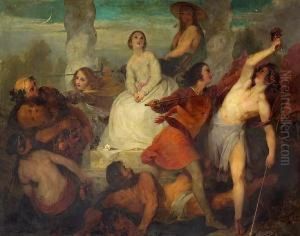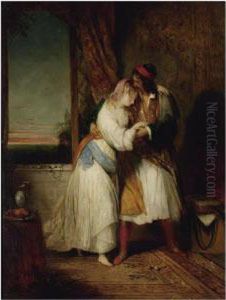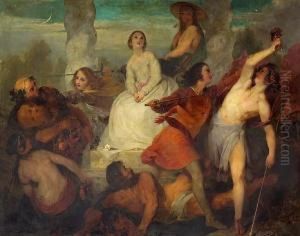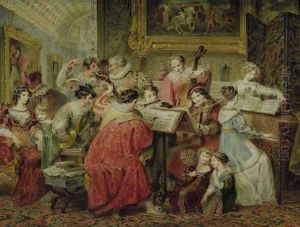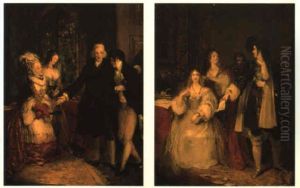Francis Philip Stephanoff Paintings
Francis Philip Stephanoff was an English painter who lived during the late 18th and early 19th centuries. He was born in 1788 into a family with strong artistic roots; his father, James Stephanoff, was a well-regarded watercolor painter, and his brother, James Stephanoff, was also a painter. Francis Philip Stephanoff's early life was marked by exposure to the arts, and he quickly developed his own artistic skills, contributing to the rich cultural tapestry of the period.
Stephanoff became known for his historical and literary paintings, as well as his work on illustrations. He worked in a variety of mediums, including oil and watercolor, and his style was characterized by attention to detail and a keen interest in capturing the essence of the historical or narrative moment. He was active at a time when there was a significant interest in romantic and historical subjects in British art, and his works reflect this trend.
During his lifetime, Stephanoff was involved with several important art institutions in Britain. He exhibited at the Royal Academy of Arts and was a frequent contributor to the exhibitions at the British Institution and the Society of British Artists, which were central to the artistic life in London at that time. His reputation was such that he was commissioned to create works for important public and private collections.
Despite his contributions to British art, Francis Philip Stephanoff's name is not as well-known today as some of his contemporaries. However, his works can still be found in art collections and are studied by those with an interest in the period. His illustrations, in particular, remain significant for their historical value and their representation of the literary and cultural interests of his era. Stephanoff passed away in 1860, leaving behind a body of work that continues to be appreciated for its historical insight and artistic merit.
